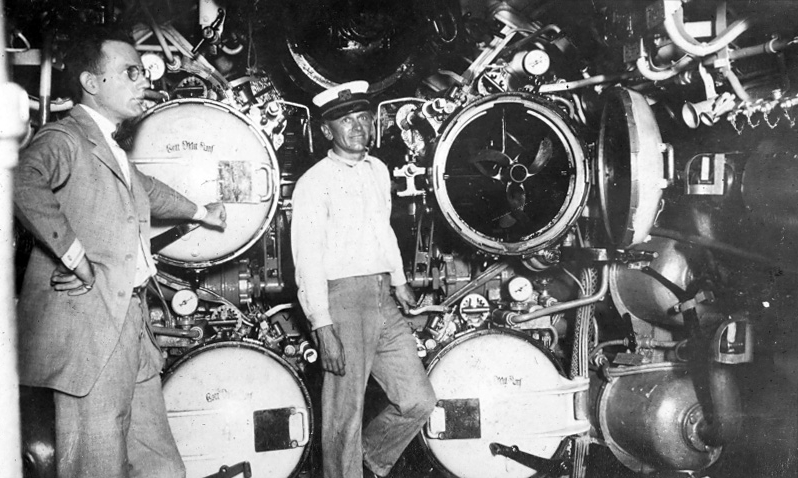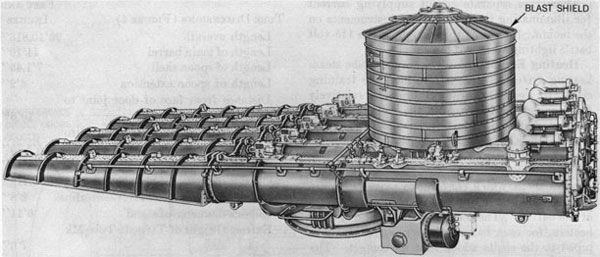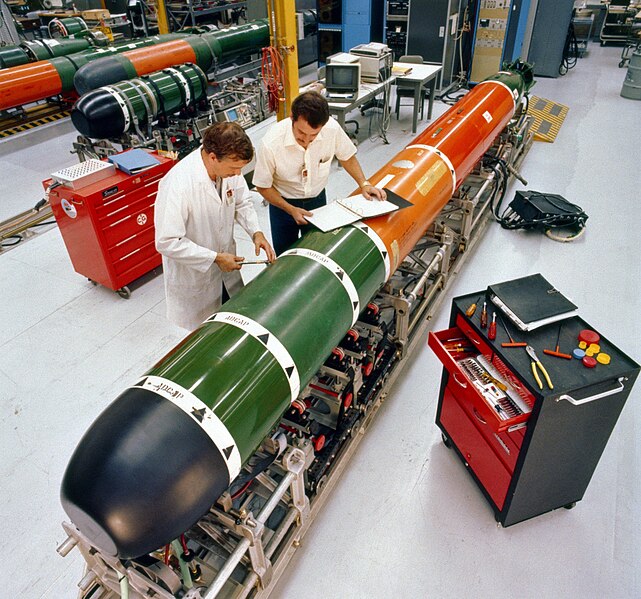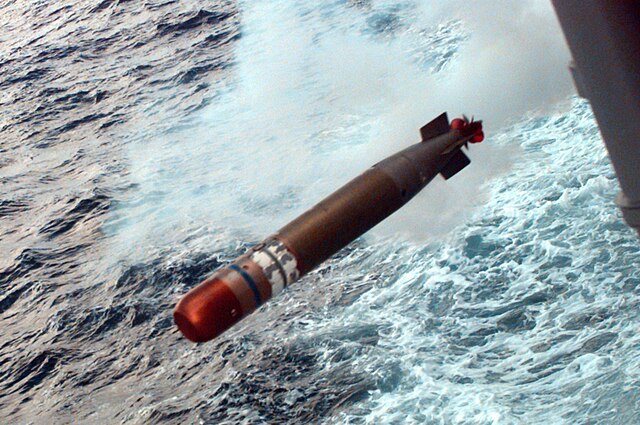A full encyclopediae of Torpedoes, from all sorts of ships, submarines and airborne, all nations, all eras with data and specs.
Introduction:
Torpedoes, as a significant technological advancement in naval warfare, have evolved considerably since their inception. Here’s an overview of the development and impact of torpedoes:
Early Development
Concept and Early Experiments: The concept of an underwater weapon dates back centuries, but practical development began in the 19th century. Early attempts included explosive charges deployed against enemy ships, such as floating mines.
Robert Whitehead’s Invention: The modern torpedo was pioneered by Robert Whitehead, an English engineer. In 1866, he developed the first self-propelled torpedo in Fiume (modern-day Rijeka, Croatia). This torpedo could travel underwater, maintaining a set depth and course toward its target. Whitehead’s design featured a compressed air engine, a depth control mechanism, and a gyroscope for stability and directional control. This invention marked a significant milestone in naval warfare.
Improved Propulsion and Guidance:
Over the years, torpedoes saw improvements in propulsion systems, shifting from compressed air to electric and later thermal engines. These advancements increased their range, speed, and reliability. Guidance systems evolved from simple gyroscopes to sophisticated sonar and wire-guidance systems, allowing for more precise targeting.
Warhead Developments:
The explosive power of torpedoes also improved, with early versions using guncotton and later transitioning to more powerful explosives like TNT and torpex.
Modern torpedoes often feature multi-stage warheads designed to penetrate the hull of enemy vessels before detonating, maximizing damage.
Impact on Naval Warfare:
World War I:

Torpedoes played a crucial role in World War I, particularly in submarine warfare. German U-boats used torpedoes to devastating effect against Allied shipping, contributing to the unrestricted submarine warfare campaign. Surface ships, including destroyers and torpedo boats, also employed torpedoes in naval engagements.
World War II:

The strategic importance of torpedoes was even more pronounced during World War II. Both Axis and Allied forces deployed submarines armed with torpedoes to disrupt enemy supply lines and sink warships. Notable engagements include the sinking of the British battleship HMS Royal Oak and the American aircraft carriers USS Yorktown and USS Wasp by Japanese torpedoes.
Aircraft-launched torpedoes also became significant, exemplified by the attack on Pearl Harbor and the Battle of Midway.
Cold War and Modern Era:
During the Cold War, torpedo technology continued to advance with the development of homing torpedoes, nuclear warheads, and improved propulsion systems. Modern torpedoes are sophisticated weapons with capabilities such as wake-homing, wire-guided control, and advanced sonar guidance. They remain a vital component of naval arsenals, used by submarines, surface ships, and aircraft.
Heavyweight Torpedoes:

Typically used by submarines, these torpedoes are designed to engage large enemy ships and submarines. Examples include the American Mark 48 and the Russian VA-111 Shkval.
Lightweight Torpedoes:

Used primarily by aircraft and surface ships for anti-submarine warfare. Notable examples include the American Mark 46 and Mark 54 torpedoes.
Supercavitating Torpedoes:
These torpedoes travel at extremely high speeds by creating a gas bubble around themselves, reducing water resistance. The Russian VA-111 Shkval is a notable example, capable of reaching speeds exceeding 200 knots.
Torpedoes have revolutionized naval warfare by providing a means to deliver devastating attacks against enemy vessels, both on and beneath the surface. Their development from simple explosive devices to highly advanced guided weapons highlights the continual innovation in military technology. The strategic use of torpedoes has had a profound impact on the outcomes of naval battles and continues to shape naval strategies and tactics in the modern era.
 Italian Torpedoes
Italian Torpedoes
The first model is the Luppis torpedo (1875), a rare example of the first torpedo used in the Italian Navy, single propeller, compressed air propelled, with a stroke of 150 m. and head loaded with 27 kg. of lightning cotton.
Followed by the A 34/356 W torpedo, built in Fiume by Whitehead in 1882, in which the use of two counter-rotating propellers eliminated the drift effect; diameter of 356 mm., head loaded with 34 kg. of guncotton, air tank charged to 70 atmospheres, reached a speed of 22 knots, for a run of 400 m. The B20 torpedo, built in Berlin in 1884 by Schwarzkopff in bronze sheet, tank loaded to 90 atmospheres, speed of 22 knots for 400 m. running, 20 kg. of header. The B57 torpedo, built by Schwarzkopff in Berlin and Fiume in 1888 in bronze sheet, 90 atmosphere tank, speed of 27 – 22 knots for a run of 400 – 800 m, warhead loaded with 57 kg. of explosive. The tank and the head of the A100/450 type torpedo recovered from the submarine Pullino, whose grounding in July 1916 caused the arrest and martyrdom of Nazario Sauro. Portion of the torpedo recovered from the Austro-Hungarian submarine U12 sunk near Venice in 1915. The A140/450 x 6.64 torpedo, partly sectioned, built by the Italian Silurificio after 1920; speed of 29 – 32 knots for a run of 6,000 – 4,000 m., warhead of 140 kg. of TNT and air tank charged to 170 atmospheres.
New systems were developed over time to increase the precision and reliability of the torpedo weapon, such as flintlocks, fuzes, gyroscopes (torpedo guides) and propellers developed starting from the end of the 19th century. Then the torpedoes of the Second World War arrived:
-W 200/450 torpedoes supplied to Italian torpedo boats, speed 30-40 knots for a run of 8,000 – 4,000 m., tank loaded at 200 kg/cm2.
-The 200/450 torpedo from Silurificio Italiano, suitable for MAS with lateral impulse torpedo launcher, warhead loaded with 200 kg. of TNT, speed 40 knots, travel 3,000 m.
-The Whitehead W 270/533.4 torpedo with operating head, supplied to submarines, with 200 atmosphere tank, speed of 49 – 38 – 30 knots for a travel of 4,000 – 8,000 – 12,000 m.
-The 270/533.4 torpedo from the Silurificio Italiano, with service head, supplied to submarines, remained in service until 1968; tank loaded to 200 atmospheres, speed of 43 – 33 knots for a run of 4,000 – 8,000 m.
-The W 200/450 “Avio” torpedo built by Whitehead in 1941, which can also be launched from an aircraft at 100 m. altitude, it developed a speed of 40 knots with a travel of 3,000 m.
The idea of the torpedo was born in 1860 in Fiume, at the time when it was part of the Austrian empire but under Hungarian administration, when the frigate captain Giovanni Biagio Luppis designed a remote airship floating hull with an explosive charge to be used for the coastal defense and therefore called “coast saver”.

Luppis torpedo 1860, The “coast saver”
Two years earlier some capitalists had created the Stabilimento Tecnico Fiumano, a shipyard with an adjoining mechanical plant for the construction of machines. One of the main shareholders was the Englishman Roberto Whitehead who moved from Trieste where he had directed the Strudthoff Machine Factory, establishing himself as an expert mechanic and builder. In order to give concrete form to his idea, Luppis contacted Whitehead who joined in 1864. Having found that the Luppis hull was too visible and subject to the whims of the sea and the wind, he modified the project with a hull acting below the surface of the water, thus creating his first torpedo, which he simply called torpedo. A spindle m long. 3.55, with a maximum diameter of 356 mm. , tapered at the ends, finned, propelled by a compressed air machine driving a propeller capable of developing 6-7 knots, weighing 136 kg with an explosive charge of 15-18 kg of guncotton.

The self-propelled torpedo
In December 1866 it was tested in the presence of a mixed commission of the army and navy with an outcome considered interesting but with a request for other tests according to a pre-established program which in March 1867 led to the signing of an agreement between the government, Whitehead and Luppis . The “Gemse” gunboat was equipped with a launch tube placed on the bow and began the tests which, however, were not all successful. Among other things, the prototype torpedo was lost and was found a year and a half later. Whitehead was not discouraged but modified or fine-tuned what was found to be inadequate or defective, continuing the tests. In March 1868, the yacht “Fantasie”, anchored 600 meters away, was assigned to act as a target ship and made 30 launches with 16 impacts. Other positive tests followed with a torpedo with a slightly increased circumference until on 11 May 1868, once functionality had been verified, the invention was purchased by the Austrian government.

The Whitehead torpedo begins to take shape
In 1870, trials began in England with the use of the old ship “Eagle” which was sunk as a target. It was an experiment that marked, albeit in peacetime, the first casualty of a very long series that would occur in times of war on all seas. The English government purchased the right of use. The first foundation in war occurred in 1877 with the clash between the ships “Shah” and “Huascar” of Peru.
The Fiumano Technical Plant was closed in 1871 and two years later Whitehead founded the Silurificio which bears his name. In 1872 it ceded the right to use the torpedo to France, in 1873 to Italy, in 1874 to Germany after improving performance with a 5 meter and 80 centimeter torpedo, in 1875 to Sweden, Norway, Denmark, in 1876 to Turkey and Russia and gradually up to the United States of America in 1891, Japan in 1895 and China in 1901. An index that needs no comments.
It was initially an experimental weapon with little precision and short range, becoming operational in 1888 but with only depth rudders, also equipped with directional rudders in 1895.
The Rijeka Torpedo Factory prospered and introduced various structural and mechanical improvements (hydrostatic plate, pendulum, gyroscope, air preheating) also concerning the launch equipment, single or coupled cylinders, fixed or tiltable, and high-speed air compressors. pressure, which private industry will also benefit from. We arrived at the great war of 1914-18 when the torpedo gained the universal notoriety that it still retains today as a protagonist in a huge number of sinkings of merchant and even military ships that numbered in the millions of tons. Both sides in the conflict lacked experience, which was acquired starting from the first episode when a German submarine surprised three English military ships at anchor, torpedoing the first and also the others which had not attempted any defensive maneuver and remained on site.
The Fiume plant was transferred to S. Poelden near Vienna for the needs of the Austro-Hungarian and German navies to protect from possible air attacks.
A note from 1922 certifies that from 1866 onwards the Rijeka torpedo factory had produced 14,998 torpedoes.
Having returned to its original location in Fiume, the Silurificio was put into liquidation. But Marshal of Italy Gaetano Giardino, governor of Fiume in 1923-24, intervened with the Italian group which, led by the entrepreneur Eng. Giuseppe Orlando took over the management of the Ganz Danubius Shipyards so that he also took over the torpedo factory. In February 1924, in fact, the Company for the Operation of the Whitehead Factories was established and resumed its activity under the presidency of the same engineer. Orlando. The Company acquired the owner in 1928, purchased new machinery, expanded the workshops, built a new launching station and a catapult for torpedoes intended for airplanes. Various improvements were introduced in terms of speed, with two counter-rotating coaxial propellers, range, steering and structure, building a total of 1,265 examples of various calibers and capacities purchased from the navies of Spain, Argentina, Holland, Yugoslavia, Turkey, Finland and USSR.
There were 750 workers working, mostly specialists, and around a hundred technical and administrative employees. Two “Fiume types” 1938 and 1941-42, when the distance reached up to 12,000 m.
Particular commitment and work required the development of the launch tubes starting from the inert “Gemse” tube, from which the torpedo was intended to emerge with its own propeller, followed by thrust with a rod, then by pneumatic impulse, finally from impulse to dust. A step forward was made in 1882 when Roberto Whitehead, John’s son, designed the spoon that allowed lateral launches.
No less important was the development and construction of the compressors for the air supply of the propeller engine, which starting from 75 atmospheres, already notable, reached 250 atmospheres in 1895. Nowadays even at 500.
Italian Torpedoes in WW2
At the opening of hostilities the Navy found itself in a fairly satisfactory situation in the field of torpedo armament even if not all the problems had been resolved. If, in fact, on the one hand an excellent type of 533 mm torpedo had been created, second in performance only to the famous Japanese torpedoes, there were still problems regarding the number of weapons available and the variety of types and calibers that they created many problems for maintenance workshops.
Overall the situation was good because compared to 1438 launch tubes there were 3660 torpedoes for an average of 2.5 torpedoes per tube; in reality there was a notable exuberance of torpedoes for the old-fashioned torpedo units while for modern submarines and torpedo boats the ratio is reduced to 1.5 torpedoes per tube. At that time, 1350 533 mm torpedoes were being delivered but at a monthly rate of only 50 weapons, another 390 torpedoes were therefore immediately ordered and all the necessary measures were taken to increase production. The industries that produced torpedoes were:
the Whitehead torpedo factory (W), built in Fiume in 1860, the oldest torpedo factory in the world.
the Italian torpedo factory (S. I.), built in Naples-Baia in 1915.
the Motofides torpedo factory, founded in Livorno in 1937 as an auxiliary plant to the one in Fiume.
The Livorno plant was not yet capable of building W. torpedoes and its activity was therefore limited up to that moment to the construction of spare parts for torpedoes and only in late 1941 did the first complete torpedoes leave that plant. The other two plants were perfectly capable of building torpedoes but only according to their own designs, it was therefore impossible to transfer orders from one torpedo factory to the other.
The scarcity of torpedoes for modern CTs and TPs led after the first months of the war to some circulars recommending a sparing use of torpedoes, the main weapon and raison d’être of torpedo boats, thus making attacks practically useless: the attack with torpedo is not in fact an “exact science” due to the too many variables that a torpedo encounters during its travel and therefore it was necessary to use a large number to have a good chance of hitting something (just remember that the Japanese sank 5 American cruisers in one night and the British launched a whopping 87 torpedoes! Thus in many cases the Italian ships did not make the most of the launch potential they had at their disposal, thus not reaping the results that certain actions would have deserved. With this in mind, to save the 533 mm torpedoes, all submarines were equipped with two tubes (one at the bow and one at the stern) with a reduction cage to be able to use 450 mm torpedoes against modest-sized targets.
In 1940 there were these types of torpedo: (the letter is the initial of the factory, the first number indicates the kg of TNT, the second the caliber, the third the length in meters)
W/270/533/7.2 for submarines, cruisers and destroyers
W/270/533/6.84 for submarines
W/200/450/5.75 for submarines and torpedo boats
W/170/450/5.46 for Mas and aircraft
SI/270/533/6.84 for submarines
SI/170/450/5.25 for torpedo boats, Mas and aircraft
The 533 torpedoes could run at 50 knots for 4000 meters or at 40 knots for 10000 meters, the 450 mm torpedoes at 40 knots for 4000 meters or at 30 knots for 8000 meters. The Italian torpedoes never suffered from particular drawbacks as happened to German or American torpedoes and proved to be excellent weapons superior for once to what our adversaries had.
The evolution of the torpedoes, one of the protagonist weapons of the First World War, underwent a strong acceleration in the twenties and thirties precisely by virtue of the excellent results obtained in the war. The unreliable and sensitive mechanical ignition was replaced by the electric one while the ordinary anchoring system was replaced by the automatic anchoring system which greatly speeded up the minefield laying operations. Due to the chronic shortage of funds, the Royal Navy was unable to completely renew the torpedo fleet and so many torpedoes used in the first months of the second conflict dated back to the period 1915-18. These mines underwent some improvements, which in the face of considerable expense, but fully satisfactory results were not achieved.
The main mines used were: (a.e.=electric ignition; 145=Kg of TNT; 1925=year of design; A=automatic anchoring; P=built by Pignone)
Wickers-Elia torpedo of the a.e. type 145/1925; it constituted the fundamental type from which all other weapons were derived.
Torpedo a.e.P. 145/1930 Elijah; some construction improvements made by the Pignone workshops.
Torpedo a.e.P. 145/1935 Elijah; other improvements to make the operation of the mine safer.
Torpedine a.e.A 200/800; submarine weapon for anti-ship use (800 indicates the maximum anchoring depth).
Torpedine a.e.P.A. 150/1935 and a.e.P.A. 150/1939; evolution of the previous types produced by Pignone.
Torpedo a.e.P. 200/1936; heavy mine usable only by surface units.
Torpedo a.e.P. 125/1938 (colonial); with a greater thrust reserve necessary to float even if covered by a lot of underwater vegetation (typical phenomenon of warm seas).
Torpedo a.e. 150/1938 C.R.; mine with reduced characteristics (C.R.) for anti-ship uses.
The mines used for anti-submarine purposes could be equipped with one or two antennas placed vertically above and below the mine for a greater possibility of attack by being able to cover a greater depth range; a temporarily floating unmoored mine was also developed for drifting weirs, which were virtually undredgeable. Anti-dredging devices and mines with anti-tear triggers were also used at the perimeters of the minefields which proved to be deadly (just think of the destruction of Force K which occurred on 19 December 1941 in a bank of mines of this type despite the fact that the English ships proceeded with paramines in water ). From 1941, German mines of different types were also used, including those with magnetic triggers.
Initially it was decided, for simplicity, to equip all the torpedoes with the anchor cable used for the deepest depths; this constituted a serious defect because there were cables of the smallest diameter even in the shallowest depths, with little resistance to the stresses produced by the wave motion with consequent large number of drifting weapons and with greater ease of dredging. Only during the conflict were three different types of chains prepared for the various seabeds.
February 1945 brought the Silurificio to risk its end when the city of Fiume was also handed over to Yugoslavia under the peace treaty.
But such a plant represented much more than a mechanical workshop, even a super-specialized one, and the high level of experience and operation could not be abandoned. It rose to new life as the Whitehead Alenia – Underwater Systems company of the Finmeccanica Group with headquarters and factory in Livorno, starting in 1960, in addition to the traditional type of torpedo, a series of high-tech products and various uses that take into account and adapt to what the current scenario requires with implications not only military: anti-submarine torpedoes, electric propulsion, water jet, active or passive guidance, self-seeking wire also launched from planes and helicopters, non-straight paths, defensive countermeasures thanks to electronics and miniaturizations so much so that all that remains of the nineteenth-century torpedo is the name.
Mine posate dal 6 giugno 1940 al 4 settembre 1943
|
|
Campi Minati |
Mine |
|
Campi Minati |
Mine |
| Alto Tirreno | 61 | 2460 | Basso Tirreno | 28 | 2655 |
| Sardegna | 61 | 6841 | Corsica | 7 | 463 |
| Alto Adriatico | 26 | 1238 | Jonio e Basso Adriatico | 59 | 4613 |
| Sicilia | 44 | 2889 | Canale di Sicilia | 46 | 17394 |
| Malta | 35 | 1831 | Tunisia | 27 | 645 |
| Africa Settentrionale Italiana | 31 | 2811 | Africa Orientale Italiana | 14 | 200 |
| Albania e Grecia | 47 | 4879 | Dalmazia | 51 | 2421 |
| Egeo | 52 | 1835 |
Varie zone ( posti da sommergibili ) |
14 | 729 |
Src
https://web.archive.org/web/20091222091629/http://www.regiamarinaitaliana.it/Siluri%20%26%20Torpedini.html#
https://web.archive.org/web/20180206002601/http://www.cherini.eu/cherini/siluro/Siluro.html
https://it.wikipedia.org/wiki/Silurificio_Whitehead_di_Fiume


 Latest Facebook Entry -
Latest Facebook Entry -  X(Tweeter) Naval Encyclopedia's deck archive
X(Tweeter) Naval Encyclopedia's deck archive Instagram (@navalencyc)
Instagram (@navalencyc)





 French Navy
French Navy Royal Navy
Royal Navy Russian Navy
Russian Navy Armada Espanola
Armada Espanola Austrian Navy
Austrian Navy K.u.K. Kriegsmarine
K.u.K. Kriegsmarine Dansk Marine
Dansk Marine Nautiko Hellenon
Nautiko Hellenon Koninklije Marine 1870
Koninklije Marine 1870 Marinha do Brasil
Marinha do Brasil Osmanlı Donanması
Osmanlı Donanması Marina Do Peru
Marina Do Peru Marinha do Portugal
Marinha do Portugal Regia Marina 1870
Regia Marina 1870 Nihhon Kaigun 1870
Nihhon Kaigun 1870 Preußische Marine 1870
Preußische Marine 1870 Russkiy Flot 1870
Russkiy Flot 1870 Svenska marinen
Svenska marinen Søværnet
Søværnet Union Navy
Union Navy Confederate Navy
Confederate Navy Armada de Argentina
Armada de Argentina Imperial Chinese Navy
Imperial Chinese Navy Marinha do Portugal
Marinha do Portugal Mexico
Mexico Kaiserliche Marine
Kaiserliche Marine 1898 US Navy
1898 US Navy Sovietskiy Flot
Sovietskiy Flot Royal Canadian Navy
Royal Canadian Navy Royal Australian Navy
Royal Australian Navy RNZN Fleet
RNZN Fleet Chinese Navy 1937
Chinese Navy 1937 Kriegsmarine
Kriegsmarine Chilean Navy
Chilean Navy Danish Navy
Danish Navy Finnish Navy
Finnish Navy Hellenic Navy
Hellenic Navy Polish Navy
Polish Navy Romanian Navy
Romanian Navy Turkish Navy
Turkish Navy Royal Yugoslav Navy
Royal Yugoslav Navy Royal Thai Navy
Royal Thai Navy Minor Navies
Minor Navies Albania
Albania Austria
Austria Belgium
Belgium Columbia
Columbia Costa Rica
Costa Rica Cuba
Cuba Czechoslovakia
Czechoslovakia Dominican Republic
Dominican Republic Haiti
Haiti Hungary
Hungary Honduras
Honduras Estonia
Estonia Iceland
Iceland Eire
Eire Equador
Equador Iran
Iran Iraq
Iraq Latvia
Latvia Liberia
Liberia Lithuania
Lithuania Mandchukuo
Mandchukuo Morocco
Morocco Nicaragua
Nicaragua Persia
Persia San Salvador
San Salvador Sarawak
Sarawak Uruguay
Uruguay Venezuela
Venezuela Zanzibar
Zanzibar Warsaw Pact Navies
Warsaw Pact Navies Bulgaria
Bulgaria Hungary
Hungary

 Bundesmarine
Bundesmarine Dutch Navy
Dutch Navy Hellenic Navy
Hellenic Navy Marina Militare
Marina Militare Yugoslav Navy
Yugoslav Navy Chinese Navy
Chinese Navy Indian Navy
Indian Navy Indonesian Navy
Indonesian Navy JMSDF
JMSDF North Korean Navy
North Korean Navy Pakistani Navy
Pakistani Navy Philippines Navy
Philippines Navy ROKN
ROKN Rep. of Singapore Navy
Rep. of Singapore Navy Taiwanese Navy
Taiwanese Navy IDF Navy
IDF Navy Saudi Navy
Saudi Navy Royal New Zealand Navy
Royal New Zealand Navy Egyptian Navy
Egyptian Navy South African Navy
South African Navy






























 Ukrainian Navy
Ukrainian Navy dbodesign
dbodesign